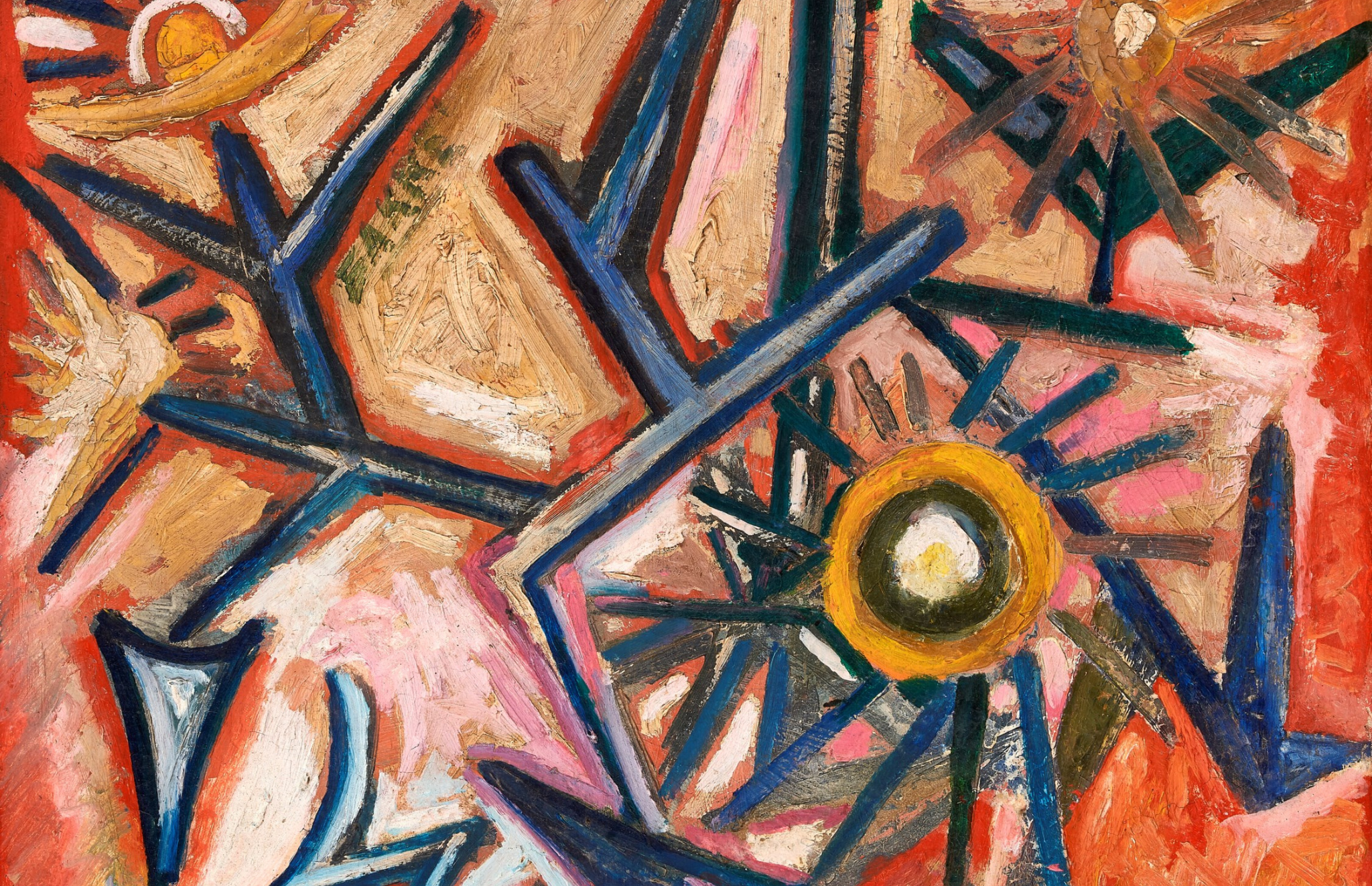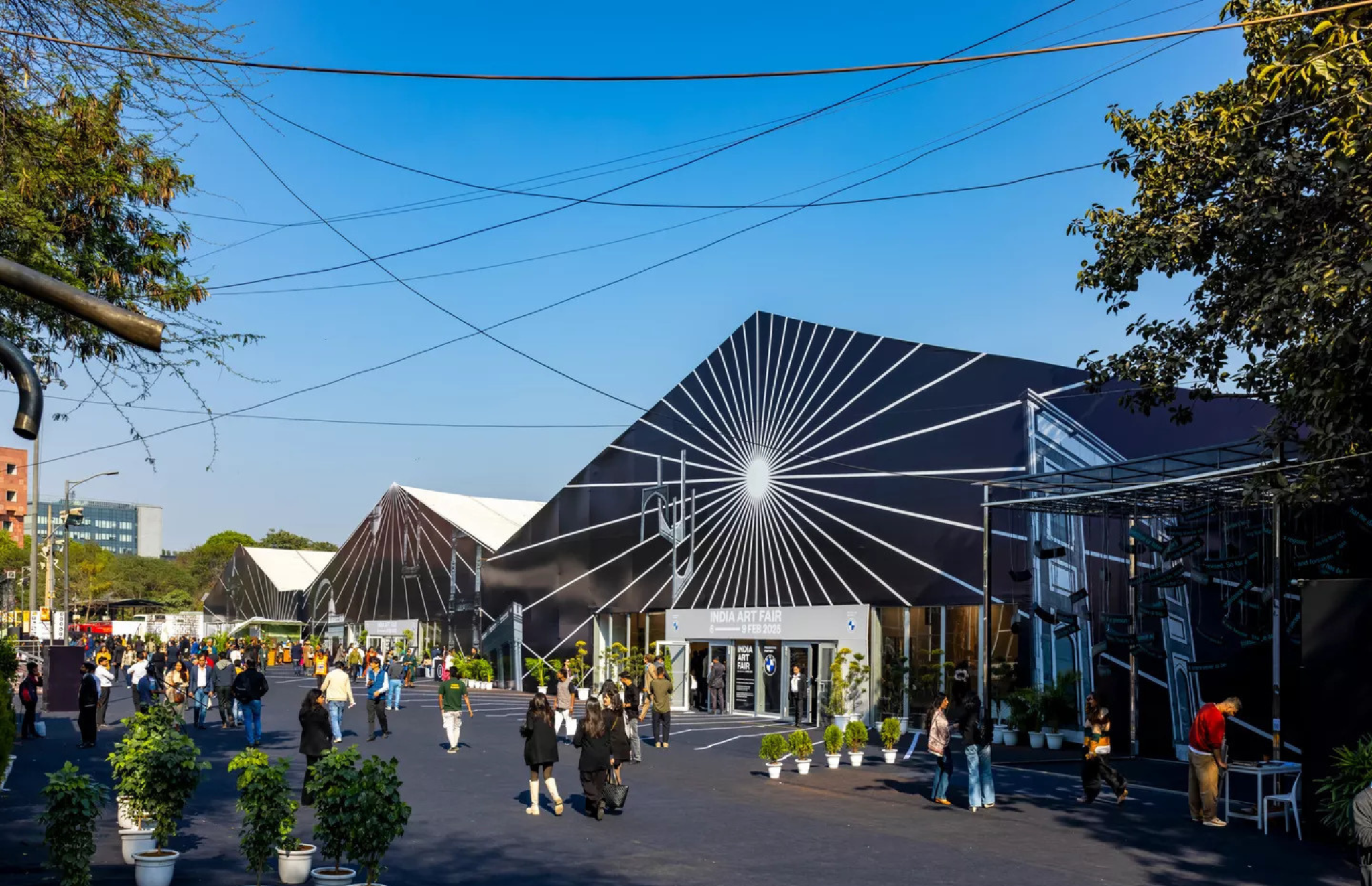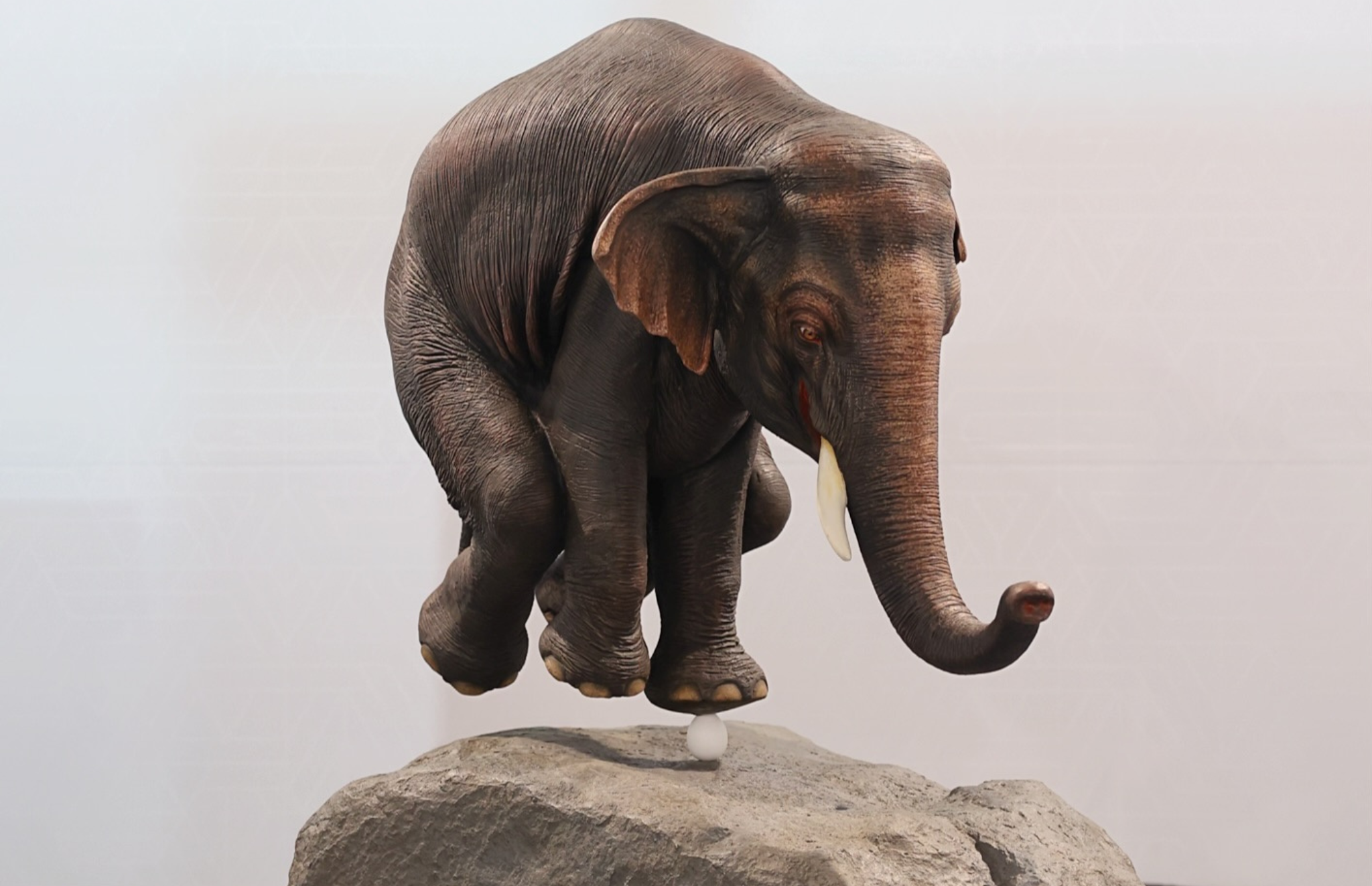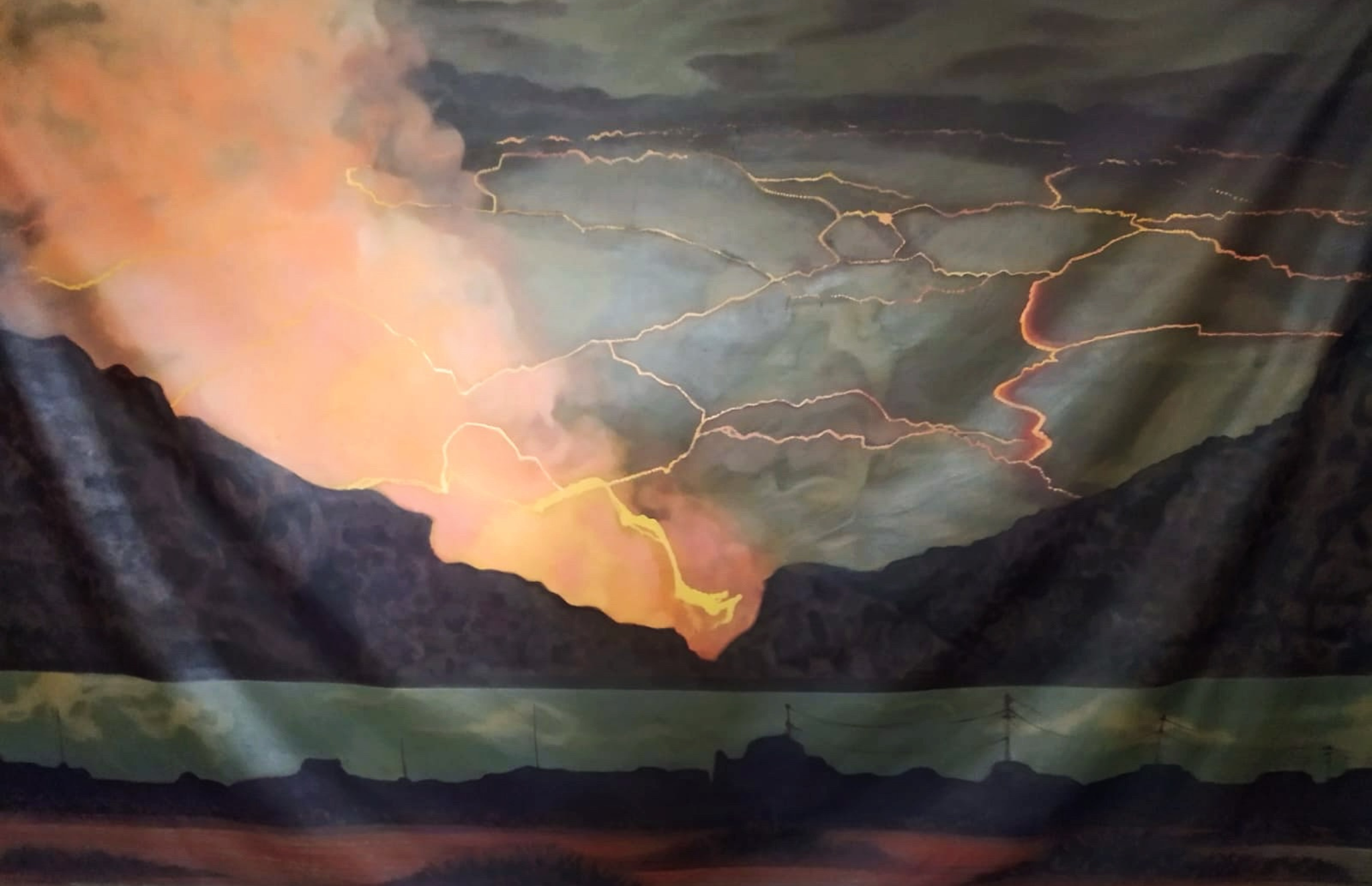INDIAN REPRESENTATION AT THE ARMORY SHOW 2024
Celebrating its 30th anniversary, The Armory Show returned to the Javits Center, New York from the 6th September until 8th September 2024. This was the fairs first outing completely under the Frieze brand — which the event company acquired in July 2023, under the leadership of Kyla McMillan as its new director.

This year’s multiple special occasions came at a “moment of assessment”, McMillan says. The fair kicked off the city’s autumn art season, when the “incredibly diverse art community provides so many avenues to engage with and be reflective of New York’s broader cultural landscape, which also includes fashion, music, design and architecture”, she said.
That diversity was also reflected in the 240 participating galleries. The Armory Show had long been seen as a regional fair with a predominantly domestic gallery lineup. Now its exhibitor roster is notably younger and more international, perhaps owing to European and Asian connections facilitated by its new owners. Among Indian Galleries, DAG, Experimenter, and Nature Morte presented works of many established and emerging artists.
Here’s a list of Indian artists that showcased their works at the Armory Show 2024.

Photo courtesy: Nature Morte
Nature Morte, Booth 203
Kamrooz Aram | Olivia Fraser | Tanya Goel | Subodh Gupta | Jitish Kallat | Abir Karmakar | Martand Khosla | Manish Nai | Theo Pinto | Sagarika Sundaram | Asim Waqif | Thukral & Tagra
Nature Morte’s booth at the Armory Show 2024 presents a diverse collection of contemporary art that explores material, method, and aesthetics, featuring artists from India, the Indian diaspora, and others inspired by Indian culture.
India, as vast and varied as Europe, showcases striking regional differences — from Kashmir in the north to Kerala in the south. With 22 major languages and countless dialects, its rich cultural mosaic has remained a stable nation-state for over 75 years. The subcontinent’s history is shaped by diverse influences, arriving from both sea and land for thousands of years. Hybridity is a core principle in India, permeating religion, fine arts, and popular culture. While India’s 20th-century relationship with Modernity was marked by tension and confusion, the rise of Postmodernism allowed Indian artists to engage confidently with global trends. Today, in the interconnected art world of the 21st century, Indian artists skillfully bridge local traditions and global conversations.

Photo courtesy: Nature Morte and Jitish Kallat
Nature Morte’s booth reflects this dynamic through the work of primarily Indian artists. Subodh Gupta’s wall relief, composed of everyday kitchen utensils from Indian homes, transforms these common objects into an intricate, map-like diagram, blending Arte Povera influences with India’s rural life. Sagarika Sundaram’s felted creation defies expectations of textile art, resembling a visceral, organic form. Her complex process is masked by the raw, frenzied energy of her South Indian heritage, combined with her experience in New York.
Tanya Goel’s large-scale piece, part of her Mechanisms series, is an intricate fusion of painting, drawing, and collage. Mixing her paints from a wide range of materials, Goel’s work plays with reflectivity and texture, evoking the structural precision of Sol Lewitt while recalling the visual intensity of Futurist artists like Giacomo Balla.

Photo courtesy: Nature Morte and Manish Nai
Olivia Fraser, a British artist living in India, blends traditional miniature painting techniques with her deep knowledge of Hatha Yoga, exploring mythological and metaphorical subjects such as snakes. Her work reflects a meditative precision, drawing on the principles of Bridget Riley’s compositions.
Kamrooz Aram, an Iranian-born artist now based in Brooklyn, merges his background in Islamic art with the language of Modernist painting. His work challenges the notion that abstract painting is non-referential, highlighting the deep connections between Modernist abstraction and the decorative arts, particularly those of the Mughal period, which were heavily influenced by Persian art and architecture.
Visitors to the Armory Show will find Nature Morte’s booth a captivating intersection of tradition and innovation, where artists blend local influences with global perspectives, offering thought-provoking works that challenge and intrigue.

Photo courtesy: Nature Morte and Subodh Gupta

Photo courtesy: DAG and Natvar Bhavsar
DAG, Booth 105
Natvar Bhavsar
DAG, with galleries in Delhi, Mumbai, and New York, showcased the sublime and boundless works of Natvar Bhavsar.
A pioneering abstractionist, Bhavsar is renowned for his large-scale, colour-field paintings created using natural pigments. Born on April 7, 1934, in Gujarat, he started as a drawing teacher before transitioning into art. His paintings, often titled with Indian words, connect deeply with the culture and myths of his homeland. Art critic Carter Ratcliff described him as “a thoroughly American painter and product of Indian culture.”

Photo courtesy: DAG and Natvar Bhavsar
The sheer scale of Bhavsar’s canvases first draws you in, but up close, they reveal an intricate interplay of pigment, forming cosmic yet microscopic worlds. His work is both abstract and deeply spiritual, speaking the universal language of colour and light — similar to music, transcending language.
Bhavsar, who moved to New York in the mid-1960s, bridges two worlds: the New York Colour Field movement of Rothko’s era and India’s rich relationship with colour. His art, while abstract, subtly reflects Indian roots, with titles like Ketaki (flower used in worship), Mayoora (peacock), and Gomatee (river). Bhavsar’s unique technique of layering dry pigments with meticulous precision creates a depth that invites viewers into a personal, poetic experience. As Bhavsar notes, “Art documents something while also being deeply emotive, taking you to a place beyond yourself, where the poetic centre of your being resides.”

Photo courtesy: DAG
Experimenter, Booth 308
Ayesha Sultana | Bhasha Chakrabarti | Biraaj Dodiya | Kanishka Raja | Krishna Reddy | Rathin Barman | Sakshi Gupta | Sohrab Hura | T. Vinoja
Experimenter debuts at The Armory Show with a compelling group exhibition featuring prominent voices from South Asia, including Ayesha Sultana, Bhasha Chakrabarti, Biraaj Dodiya, Kanishka Raja, Krishna Reddy, Rathin Barman, Sakshi Gupta, Sohrab Hura, and T. Vinoja.

Photo courtesy: Experimenter and Sohrab Hura
Bhasha Chakrabarti’s Monolithic Witnesses installation juxtaposes natural rock formations from Karnataka with paintings of nearby ruins. By contrasting monumental stones with a 16th-century mandapa, she highlights the resilience of nature against the fleeting grandeur of human civilization, exploring how natural and artistic creations differ in longevity and significance.
Sohrab Hura’s pastel drawings reflect his retreat from the rigidity of photography during personal turmoil. His work navigates themes of loss, memory, and the everyday, weaving personal relationships and political undertones. Hura’s drawings also blur lines between human and animal subjects, extending a deeply personal and social narrative through his choice of medium.
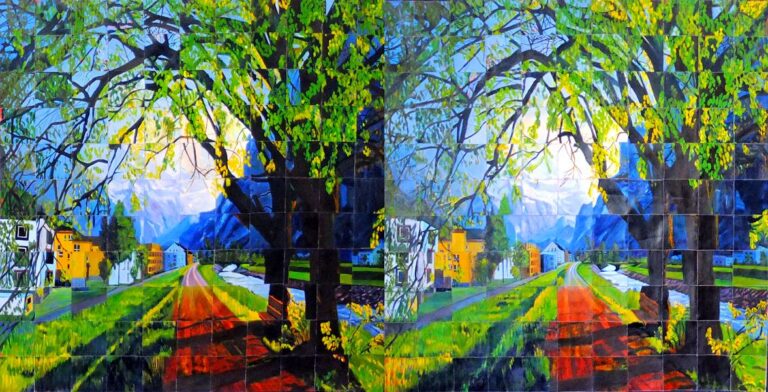
Photo courtesy: Experimenter and Kanishka Raja
Biraaj Dodiya’s paintings explore transformation and instability, layering pigments to evoke both creation and destruction. Her work oscillates between abstract landscapes and intimate emotions, challenging perceptions of form and structure. Dodiya’s Late Fragment series captures this balance in small, evocative pieces, where paint becomes a metaphor for bodily and emotional erosion.
Kanishka Raja’s intricately patterned works explore the intersections of craft, technology, and culture. Raja’s I and I series merges painting, weaving, and digital reproduction, reflecting his binational experiences in India and the U.S. His practice centres on contrast and duplication, engaging with the tension between the handmade and the digital.
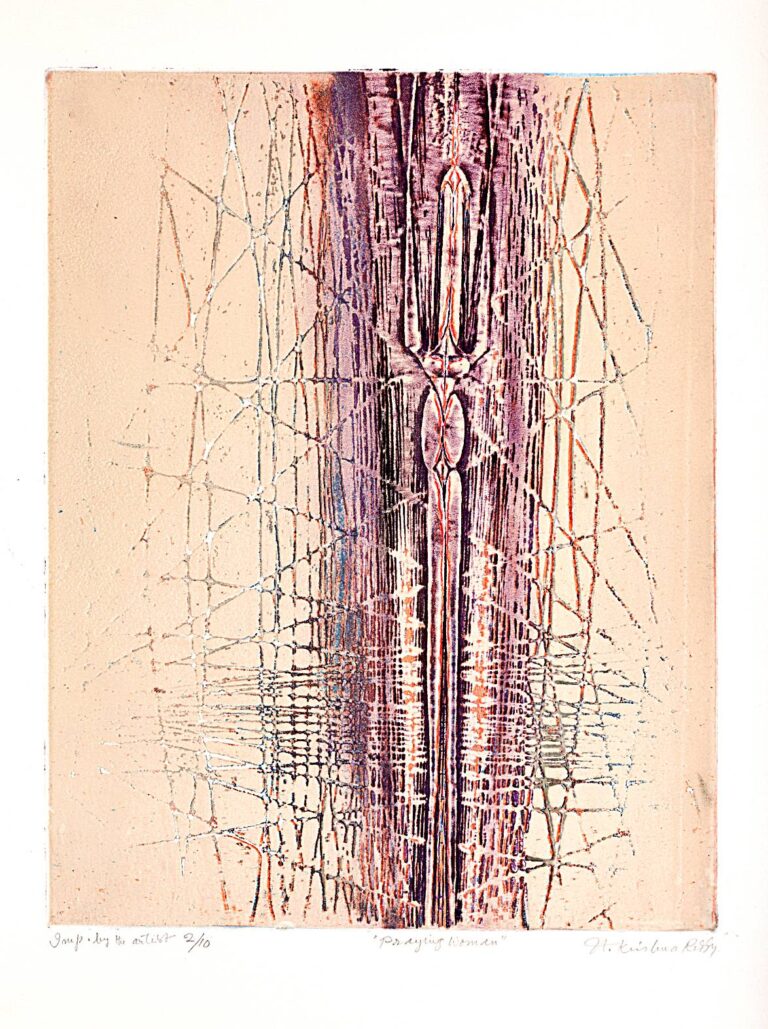
Photo courtesy: Experimenter and Krishna Reddy
Ayesha Sultana’s latest works, Inhabiting Our Bodies, use tissue paper and coloured inks to examine the fragility and resilience of both the human body and natural elements. The translucent nature of the paper mirrors the porousness of the body and its memories, blurring the lines between personal and environmental narratives.
Krishna Reddy’s practice, spanning over seven decades, was deeply influenced by Eastern philosophy and the natural world. Reddy’s innovative viscosity printing process marries his philosophical insights with technical mastery, pushing the boundaries of printmaking and sculpture. His work emphasises the interconnectedness of nature and humanity, rooted in his philosophical teachings.
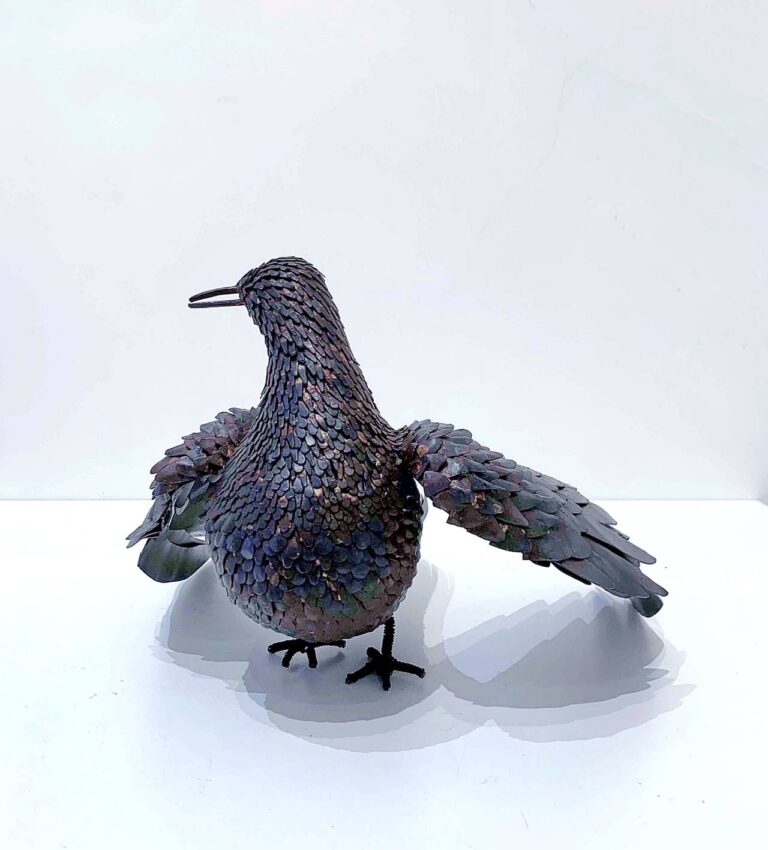
Photo courtesy: Experimenter and Sakshi Gupta
Sakshi Gupta reinterprets everyday objects in her sculptures, often using found materials like metal scrap. Her series of pigeon sculptures reflect the shared traits between animals and humans, examining the persistence of life in urban environments. The pigeons, as silent witnesses to the human world, evoke reflections on resilience and survival.
Vinoja’s work, shaped by the trauma of Sri Lanka’s civil war, explores themes of loss and displacement. Through her use of fabric as a second skin, she delves into the scars left on individuals and land by conflict, reflecting on memory and history’s lingering impact on lived realities.
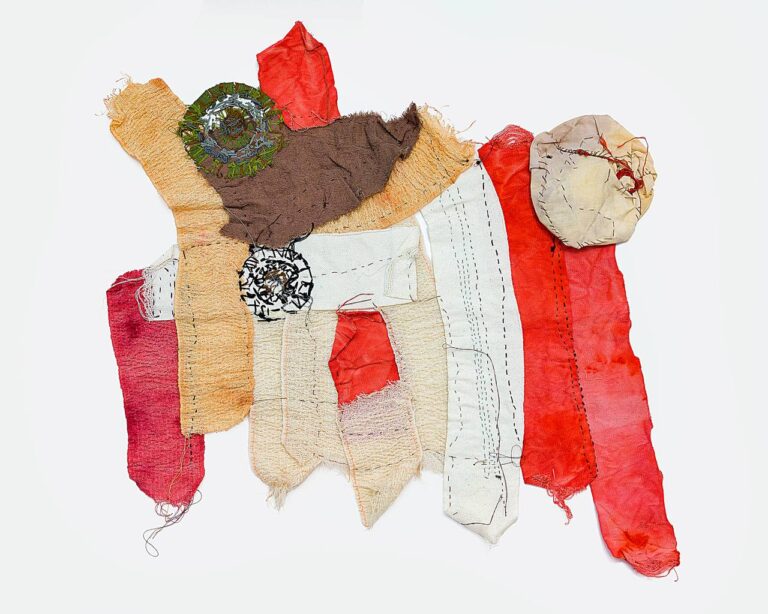
Photo courtesy: Experimenter and Vinoja T.
Rathin Barman’s Space Counts series challenges traditional notions of architecture, focusing on how spaces evolve with human habitation. His work, rendered in charcoal and brass, examines the fluid relationship between built environments and the lives that occupy them, creating intricate reflections on human presence and space.
The exhibition delves into history, nature, human experience, and architecture, offering viewers layered perspectives on complex realities.
Armory Show runs from 6 – 8 September 2024
Text by Shalini Passi
Image Courtesy: Natvar Bhavsar, DAG, Experimenter, Sohrab Hura, Kanishka Raja, Krishna Reddy, Sakshi Gupta, Vinoja T., Nature Morte, Jitish Kallat, Manish Nai, and Subodh Gupta
Find out more about the exhibits here:


